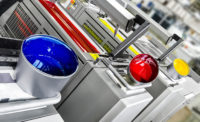The Road to Reaching Sustainability Goals

Image courtesy of Boxed Water
Given the power of social media, it has become much easier for concerned consumers to make their voices heard. As the regulatory landscape continues to evolve, it has also become necessary for companies to become proactive in anticipation of new, effectual environmental policies. These circumstances have given birth to innovative technologies that reduce carbon footprint and quantify environmental impact. With these driving factors pushing the packaging industry and its material suppliers towards a more sustainable future, how can and should companies respond?
Responding to Consumer Trends
Taking the pulse of consumers is the first step towards identifying meaningful solutions that will perpetuate sustainability in the packaging industry. Last year, McKinsey launched a survey in ten different countries and conducted an analysis to better understand how consumers felt about sustainable packaging. Here are a few key findings:
- In the US, over 50% of consumers are deeply concerned about the environmental impact of packaging, and 60-70% will pay more for a product packaged sustainably1
- Packaging sustainability is a less important purchasing criterion than price, quality, brand, and convenience1
- Consumers would buy sustainably packaged products if labeling was clearer, and if sustainable packaging was more ubiquitous1
- US consumers are equally concerned about a broad range of sustainability issues including water and air pollution, climate change, waste production, and deforestation1
These findings suggest that most consumers care about sustainability, but it is not a highly influential purchasing criterion when compared to competing factors such as price, quality, brand, and convenience. When sustainability information is harder to find, its influence is stifled, and it can be easily neglected by the consumer.
Companies can address these issues via a holistic, educational approach, which includes, but is not limited to, the following steps:
- Educating the consumer via campaigns or online resources. Boxed Water has educational content on their website about the importance of sustainable packaging.
- Providing examples of how they are addressing a range of environmental concerns. Patagonia discusses their vast footprint and the changes they are making to reduce it.
- Improve sustainability labeling. Cocokind has added a sustainability panel to their packaging which includes lifecycle details of the product.
- Understand how end-users recycle and make it easier for them. Brita provides a free shipping label to send the company used filters which are then converted into 100% recycled items.
Responding to an Evolving Regulatory Landscape
The US does not have a federal recycling program, but individual communities develop their own programs best suited for their needs. Programs have been widely adopted, as 94% of the country has a recycling program. 2 However, this leads to a more fragmented system, often with uneven access and unequal services. This lack of convenient recycling options has led to the re-emergence of a familiar pattern: 94% of Americans support recycling, but only about 35% recycle. 2 Additionally, funding for collection and transportation of recyclables has been insignificant since China stopped accepting imports in 2017. Recycling has been largely sent to landfills or incinerators. Legislators have been increasingly concerned about the ecological and social impacts of this situation.
One legislative solution to alleviate this problem is Extended Producer Responsibility (EPR). EPR is a policy approach that assigns responsibility to the packaging producers for product end-of-life, including financial and/or operational commitments. Some believe EPR is at odds with the current recycling system, but proponents believe it can be tailored appropriately to different states or communities. Because the producer is responsible for collecting, sorting, and recycling, they are incentivized to make packaging easier to process at end-of-life. This could lead to clearer labeling, more sustainable raw materials, and an acknowledgement of how consumers recycle. Maine is the first state to implement an EPR program, while Oregon and Washington have already passed EPR bills. 3 Six other states have introduced EPR bills to their local governments. 3
Responding to Innovation
- Biobased innovation – As research continues to uncover new possibilities in sustainable packaging, processes and designs become optimized. Aalto University in Finland is developing a new Smart Foam made out of lignin, wood fiber, and nanoclay. This material has the potential to replace bubble wrap and Styrofoam, retaining adequate strength, flexibility, and resistance to heat. Grocery retailer Wegmans recently converted all egg cartons from polystyrene foam to 100% post-consumer recycled paper products. Department store Harrods is converting all plastic bags to 100% recyclable, sustainably sourced paper bags, made from 40% recycled materials.
- Emissions transparency – Advancements in environmental science have enabled companies to accurately publicize carbon footprint data and conduct life cycle analyses on their products and operations. This builds public trust and transparency in the supply chain. It also helps companies set benchmarks to hold themselves accountable.
Consumers should continue to challenge companies to improve the sustainability of their packaging by holding them accountable. Pushing producers to provide clear, digestible sustainability information will help consumers make quick purchasing decisions and foster trust. Consumer buying power and active participation in educational discourse are strong forces we can all use to help build a more sustainable future.
Nathan Pajka, Sustainability Specialist, Metsӓ Board, Americas, works in tandem with the Product Safety and Sustainability team in Finland to translate the team’s objectives to the Americas and serve as their sustainability expert in the region. Based in the Norwalk, CT, office, he is responsible for providing sustainability data, information, and education to help clients reduce the environmental impact of their packaging. Before joining Metsӓ, he worked for one of the largest healthcare companies in Massachusetts as well as serving as a sustainability ambassador for one of the largest utilities in New England. Nathan holds an MBA in Sustainability and Social Change and an MS in Environmental Science and Policy from Clark University, Worcester, MA. Contact him at, Nathan.pajka@metsagroup.com
References:
2 https://www.forbes.com/sites/blakemorgan/2021/04/21/why-is-it-so-hard-to-recycle/?sh=28e315ae3b77
3 https://epr.sustainablepackaging.org/policies
Looking for a reprint of this article?
From high-res PDFs to custom plaques, order your copy today!






